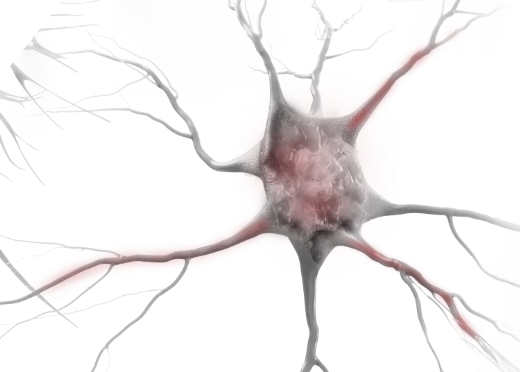Pathophysiology
A PROGRESSIVE ASTROCYTOPATHY
A PROGRESSIVE ASTROCYTOPATHY
One of the potential mechanisms responsible for the pathogenesis of Alexander disease is the toxic accumulation of pathogenic variants of glial fibrillary acidic protein (GFAP),1,41 an intermediate filament cytoskeletal protein.42 GFAP is primarily expressed in astrocytes, which play a crucial role in the healthy brain through involvement in the formation of the blood-brain barrier; maintenance of extracellular homeostasis, neurogenesis, and synaptogenesis; and providing physical and metabolic support to neurons.31,42,43

Approximately
of Alexander disease cases are associated with a pathogenic variant in GFAP.20
ASTROCYTIC DYSFUNCTION
The toxic protein accumulation in Alexander disease causes astrocytic dysfunction, ultimately leading to abnormal myelination and neuronal dysfunction.5,31,44

Pathogenic variants in the GFAP gene are believed to cause a toxic gain of function that leads to GFAP aggregation and makes GFAP resistant to degradation, causing further increases in GFAP expression, accumulation of GFAP in astrocytes, and impairments in astrocytic function.1,41,45
Injury to astrocytes drives further upregulation of GFAP, creating a positive feedback loop that accelerates disease progression.44
The presence of Rosenthal fibers (ie, cytoplasmic protein aggregates) in astrocytes within the brain is a pathologic hallmark of Alexander disease, although Rosenthal fibers are not specific to the disease.20,47
People diagnosed with Alexander disease progressively develop disabilities that may be severe, such as cognitive impairment and motor function issues.2,4,48